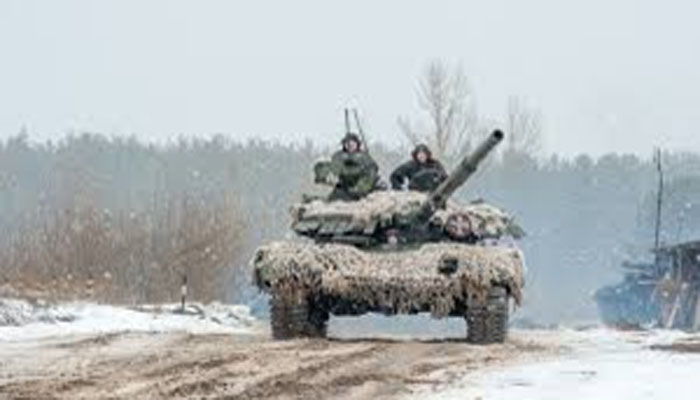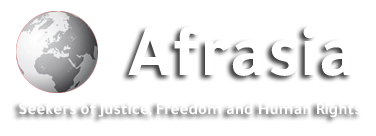
Afrasianet - Munir Shafik wrote: The Ukraine crisis has a long and complex history, starting with the collapse of the Warsaw Pact and the disintegration of the Soviet Union, and Ukraine’s gaining its independence, until it reached its current stage, which began with the 2014 coup, and the formation of a regime loyal to America and the West, which forced Russia to carry out a military operation to restore semi Crimea, part of eastern Ukraine.
The internal military confrontations did not subside, until after the Minsk ceasefire agreement.
Two republics were formed in eastern Ukraine, the Donetsk People's Republic and the Luhansk People's Republic, supported by Russia. However, the Minsk Agreement, even if it stopped the fire, kept the embers under the ashes.
The pro-Western Republic of Ukraine is determined to annex eastern Ukraine, and has also included in its constitution joining NATO, which Putin sees as a threat to Russian national security, which cannot be tolerated, or tolerated, if it is placed within the framework of the American policy that included the republics in NATO The former Soviet, such as Lithuania, Estonia, Latvia, and Georgia (except for the Russian intervention), and the rope on the tractor, which means encircling the borders of the Russian Federation completely, in order to complete a strategic military operation aimed at planting medium-range and near-range missiles, like a bracelet around Russia. * We must know that when the Russian leadership mobilizes its forces around Ukraine, and takes its crisis with NATO (America and Europe) to the point of standing on the brink of war.
It stands in front of a threat to its national security, and it must stop it after it reached Ukraine.
At this point, enough was enough with the Kremlin's leadership, the presidency, the army, the government and the deep state, so the forces moved to the borders of Ukraine and the mobilization of tanks began, which undoubtedly suggests preparations for a major military attack.
Putin made it clear that the Ukrainian situation, arming it and preparing it for joining NATO, and preparing the Kiev government to invade eastern Ukraine, would pose a threat to Russian national security at the highest level. That is why he set a general goal for this mobilization, which is to turn Ukraine into a neutral, demilitarized state, similar to the Finnish case in the Cold War era. Of course, this is the highest ceiling. As for the lowest acceptable ceiling, which is the Ukrainian-American-European pledge that Ukraine will not join NATO, and adherence to the Minsk Agreement not to attack eastern Ukraine.
The American answer came from a political point of view: the failure to meet any of the Russian demands related to its national security, and Russia's threat to impose the most severe economic and financial sanctions if it resorted to war.
Together with its allies, especially Britain, it began arming the Ukrainian army with highly advanced weapons, beyond anti-tank and anti-aircraft missiles, to medium and short-range ballistic missiles. Europe joined the threat to participate in the sanctions in the event of a Russian attack on Ukraine, while Germany objected to the armament of Ukraine, and sought to mediate to defuse the conflict, and France also mediated by sending troops to Romania
Thus, the Ukrainian crisis escalated to the level of the threat of war, and the Biden administration began to anticipate a Russian attack, and set its dates, despite Russia's assertion that it did not intend to launch a military attack.
Some Russian statements have described the US position as provoking a hysterical campaign, and an attempt to push Russia to attack Ukraine militarily.
The mobilization of armies in order to achieve a goal, or to meet certain goals, can only be dealt with, in principle and historical experience, with the highest levels of seriousness. Because whoever mobilizes armies, as Putin did and does around Ukraine, declaring the necessity of meeting specific demands for him, becomes obligated to war if his requests are not met.
Therefore, America, if it wants to avoid war or avoid it, must meet what satisfies Putin in terms of Russia’s national security .
That is, the two parties go to direct or indirect negotiations, to reach an agreement that secures the side that Putin cannot accept a lesser agreement.
But America, until the moment he writes this article, is determined not to provide what would satisfy Putin until he withdraws his forces, as if saying to him: Go ahead, attack militarily, and our answer will be Ukrainian armed resistance against you, and harsh US-European economic and financial sanctions. Hence, the Russian-Chinese agreement, which was expressed in the statement of the Putin-Xi Jinping summit, can be considered as a firm response by Putin to the threat of US-European sanctions.
Because the aforementioned agreement raised Russian-Chinese relations to a level that obliges China to stand by Putin with all its capabilities, allowing Putin to face sanctions with minimal risks to the Russian interior, and to the Russian economic and financial situation, which is imposed on America and Europe after this statement To face the Russian challenge in the Ukrainian crisis, without fully relying on the fact that the threat of sanctions will prevent Putin from proceeding with the military build-up, or will prevent him from launching war.
There is no doubt that the elevated level of Russian-Chinese relations, as expressed in the statement of Presidents Xi Jinping and Putin, brought about an important sudden change in the balance of the conflict related to Ukraine. This is in Putin's interest, whether on the one hand, continuing the mobilization, or waging war on the one hand, or on the one hand, America and Europe, in the search for a settlement that satisfies Putin, and that would allow the war to be defused in the Ukrainian crisis.
This new equation in the balance of power allows Putin to continue to mobilize and escalate it as he is doing now, and for a longer period, even without resorting to war.
That is, to keep the danger of war present, and to keep the crisis inflamed, for a period that may be long.
Putin, in this case, puts Ukraine in a crisis that it cannot easily bear, and puts Europe in a crisis that it does not need.
That is, of course, if he does not go to war, and is relatively safe from the threat of US-European sanctions. As for the European and American levels, this new equation will push the balance of power in favor of Putin, and the initiative remaining in his hand, to search for consensus.

